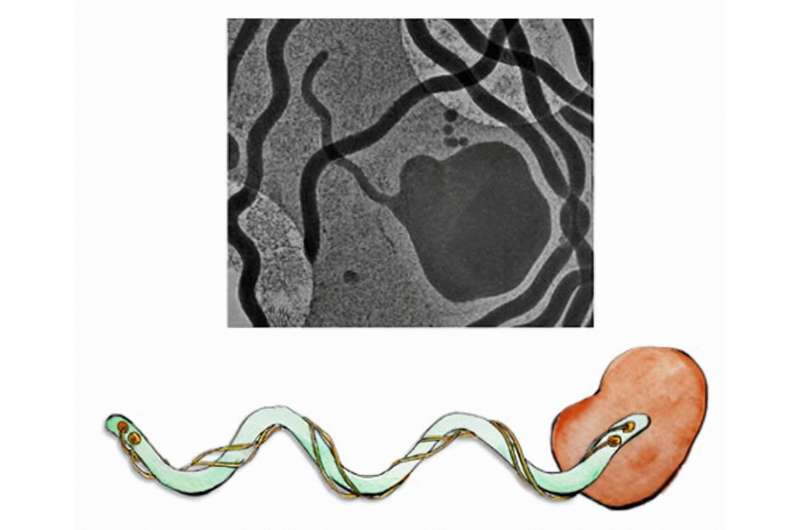This article has been reviewed according to Science X's editorial process and policies. Editors have highlighted the following attributes while ensuring the content's credibility:
fact-checked
peer-reviewed publication
trusted source
proofread
How a pathogenic bacterium searches for food

Bacteria whirl around in the mouths of most people, forming dental plaques and sometimes causing nasty gum infections. Treponema denticola might be a dangerous pathogen, but not much is known about this bacterium. It was up to Ariane Briegel and her research group to change that. The work is published in the journal mBio.
"In our lab, we are interested in how bacteria find their food sources," Briegel explains. She is a researcher at the Institute of Biology Leiden. "Most often bacteria use a process called chemotaxis. With a group of sensors, called a sensory array, they can 'taste' and respond to the environment." With these arrays, bacteria find sugar sources and amino acids, and use their tail for example to move to a preferred environment.
Briegel is also the co-director of the Netherlands Center for Electron Nanoscopy (NeCEN), a research facility with powerful electron microscopes. "We freeze bacteria really quickly so we can create a crystal clear and very sharp image of individual proteins, and other objects that are only a few nanometers big. In this way, Alise Muok, who did most of the experiments, made the sensory array of T. denticola visible."
With international help, Briegel and Muok could determine the complete use and structure of T. denticola's sensory array. "We had great help from Keith Cassidy of Diamond Light Source in the UK, who made a 3D molecule simulation to define what we saw in the microscope pictures. And then the lab of Chunhao Li from the Virginia Commonwealth University performed genetic experiments and such, so we could pinpoint the sensory behavior. That is how we found out it is very distinct from other known arrays."
Treatment for leprosy, Lyme disease and syphilis
The findings have interesting implications on how to deal with this pathogenic bacterium. Especially as the sensory array also seems to sense and respond to a molecule that is already cleared by the Food and Drug Administration (FDA) as an approved drug. "That means there is potential to use this molecule as a method for treatment."
Briegel says, "T. denticola is part of the spirochetes-family, which is mainly known for causing severe illnesses such as leptospirosis, Lyme disease and syphilis. We are still several big steps away from applying anything into clinic, but it might become interesting down the line in the treatment of these organisms."
More information: A. R. Muok et al, A new class of protein sensor links spirochete pleomorphism, persistence, and chemotaxis, mBio (2023). DOI: 10.1128/mbio.01598-23
Journal information: mBio
Provided by Leiden University





















